Blog
29 October 2025
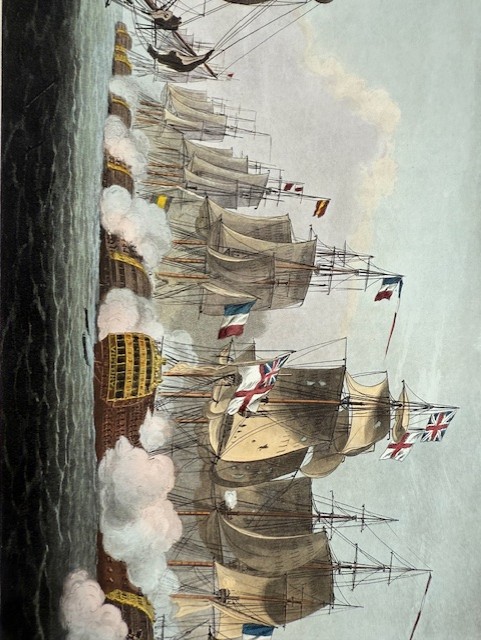
'The Battle of Trafalgar', in J. Jenkins, 'Naval Achievements of Great Britain' (1816-1817)
How did you spend Oak Apple Day this year? (It was 29 May). And how did you mark Trafalgar Day? (It was last week, 21 October, in case you missed it). These are just some of the national anniversaries once observed and now generally forgotten.
Oak Apple Day commemorated the restoration of the monarchy in 1660 on what happened to be Charles II’s thirtieth birthday and featured the wearing of sprigs of oak leaves and oak apples, in memory of how Charles hid in an oak tree after the Battle of Worcester in 1651. During the nineteenth century, and at the centenary in 1905, the anniversary of the Battle of Trafalgar was solemnly commemorated as a moment of national salvation, perhaps comparable to how the Battle of Britain in 1940 is now remembered. But widespread observance of Trafalgar Day faded away after two world wars brought more urgent and recent reasons for commemoration, also observed at this autumnal season of the year.
The construction of Horatio Nelson (1758-1805) as a national hero is recorded in some of the illustrated books from his times in Emmanuel’s collections. Blagdon’s Graphic History (1806), a reverent commemoration of Nelson’s life, duly records the youthful hero’s early bravado during a naval voyage into polar waters.

F. W. Blagdon, 'Orme's Graphic History of Horatio Nelson' (1806)
Missing and presumed lost, our hero has actually been hunting a polar bear across the ice. His gun having become unworkable due to ice, he finishes the bear off with a blade. Reprimanded, he replies that he wanted the bearskin for his father.
Nelson’s naval victories such as the Battle of Copenhagen (1801) and the Battle of the Nile (1798) were decisive turning points, recorded in Jenkins’s Naval Achievements of Great Britain (1816-1817).
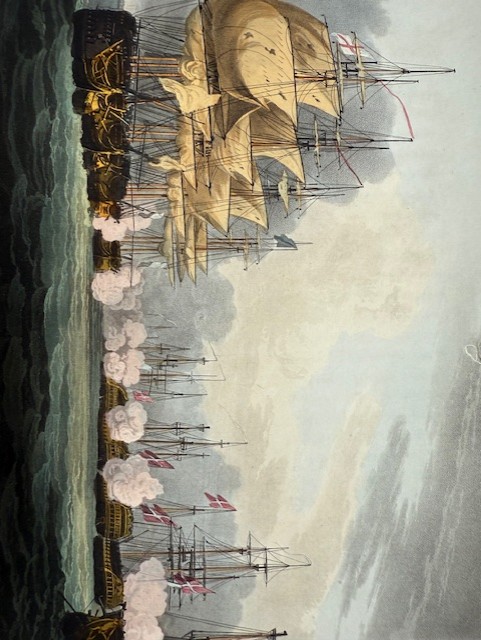
Jenkins, 'The Battle of Copenhagen'
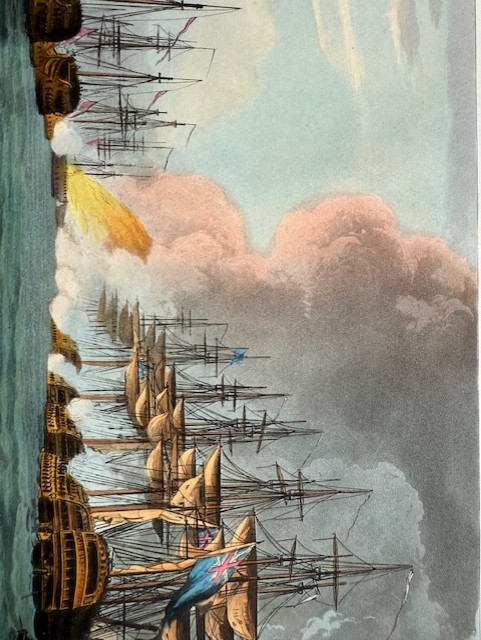
Jenkins, 'The Battle of Copenhagen'

Jenkins, 'The Battle of the Nile'
Yet during his lifetime in the public eye, Nelson the naval commander was also known for his unorthodox private life. Sir William Hamilton (1731-1803), the widower British Ambassador in Naples, had become smitten with Emma Lyon, an artist’s model of humble origins who was 34 years his junior, and had made her his second wife. Hamilton was an avid collector of antiquities and interested in the excavations at Pompei.
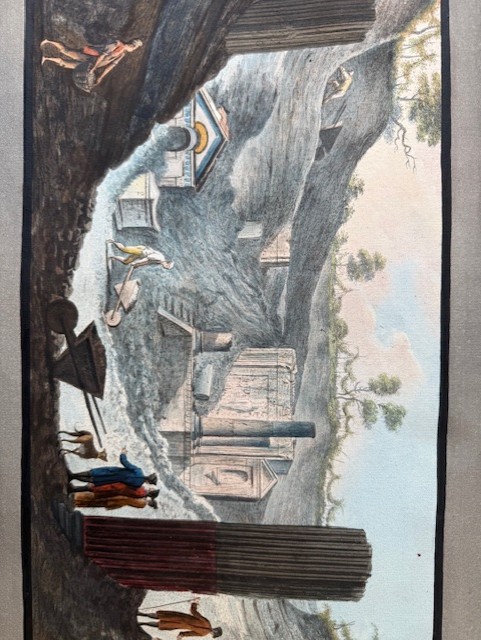
Excavations at Pompei, in Sir William Hamilton, 'Campi Phlegraei' (1776)
Hamilton was also a serious early investigator of volcanic eruptions. His Campi Phlegraei (1776) studies the eruptions of Vesuvius during his long ambassadorship, with 50 hand-coloured gouache illustrations by Pietro Fabris, including study of the changing nature of the volcano summit.
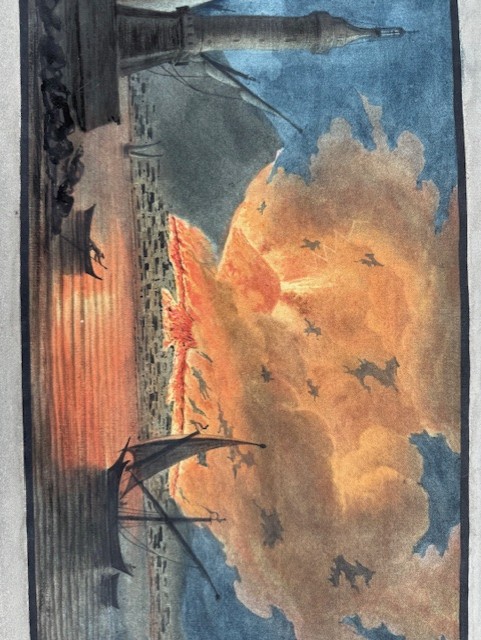
'Campi Phlegraei'
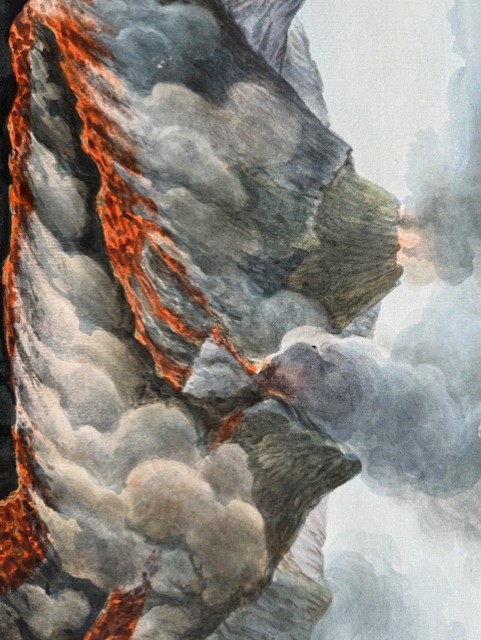
'Campi Phlegraei'
Also depicted are flaming lava flows spreading dramatically across cultivated countryside, while another striking image shows Hamilton conducting the King and Queen of the Two Sicilies to observe an eruption at close quarters.

'Campi Phlegraei'

'Campi Phlegraei'
Nelson’s affair with Lady Hamilton became a contemporary scandal, less because it began than because it settled into an established threesome for the rest of Hamilton’s life. With characteristic savagery, the caricaturist James Gillray satirizes Lady Hamilton as a by now distinctly obese Dido lamenting the departure to sea of her Aeneas. British naval vessels are seen on the horizon and Hamilton is just visible, sleeping squashed beside her. His books on antique subjects are scattered about, along with a broken statue of Priapus.
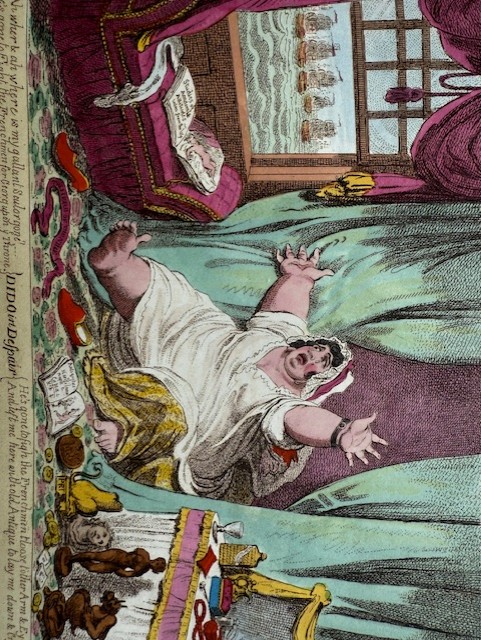
'Dido's Despair' in James Gillray, 'The Caricatures' (c.1800-1806)
When Hamilton was recalled to London, the ‘throuple’ travelled back as a threesome, with Emma duly giving birth to Nelson’s child. Both Emma and Nelson were present at Hamilton’s deathbed, and Hamilton bequeathed Nelson his portrait of Emma by Elizabeth Vigée le Brun.
Eternal fame would be secure for the brilliant naval strategist who was to die on his aptly-named ship Victory in the very moment of his triumph over the French and Spanish fleets off Cape Trafalgar, securing Britain’s command of the seas for the rest of the Napoleonic Wars and putting paid to any prospect of a French invasion. Nelson’s strategy was to break the enemy line of ships by sailing at right angles to it. Despite being outnumbered in ships and men, Nelson’s victory was a rout, although the battle was severe.
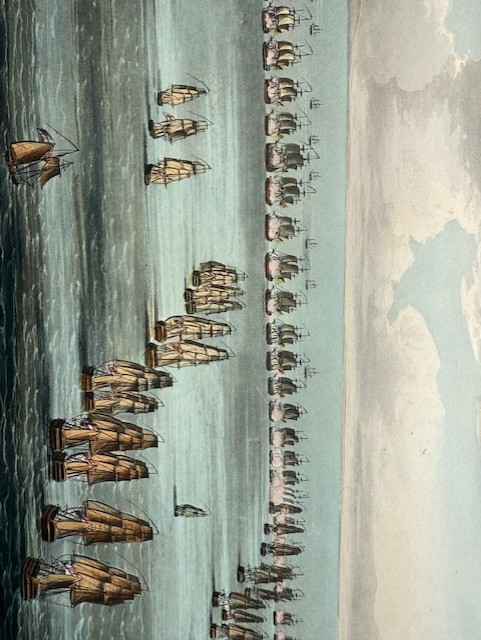
'Breaking the Line at Trafalgar', in Jenkins, 'Naval Achievements'

'The Battle of Trafalgar' in Jenkins, 'Naval Achievements'
In death, Nelson was accorded an unparalleled state funeral as a national hero, only repeated since on the same scale for Wellington and Churchill. Blagdon’s Graphic History recalls its majesty for a contemporary readership. There is the voyage along the Thames, also part of Churchill’s funeral, and the extraordinary vehicle on which the hero’s coffin was conveyed – something comparable was designed for Wellington.
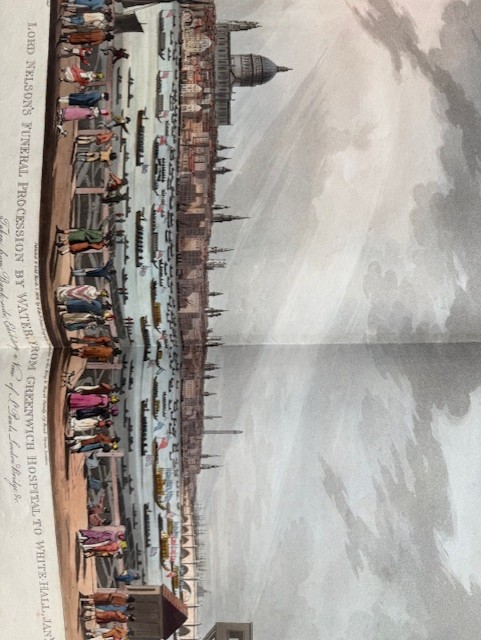
'Nelson's Funeral Procession by water from Greenwich Hospital to Whitehall', in Blagdon, 'Graphic History'
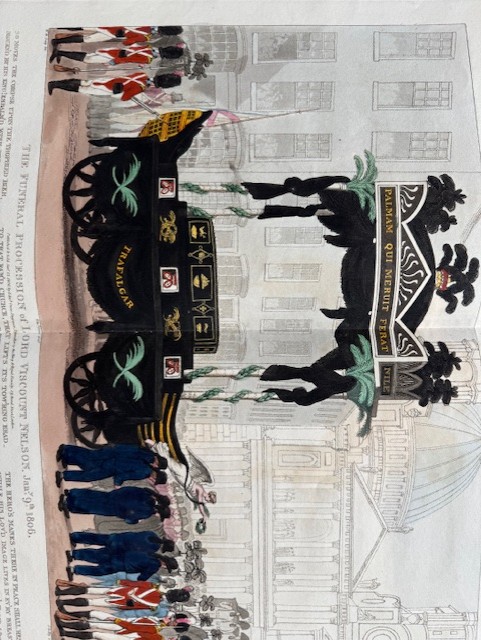
Nelson's Funeral Carriage nearing St Paul's, in Blagdon, 'Graphic History'
Finally there were the obsequies beneath the dome of St Paul’s amid a vast congregation, and the toast repeated on each Trafalgar Day since, which always includes the words ‘To the Immortal Memory … ’.
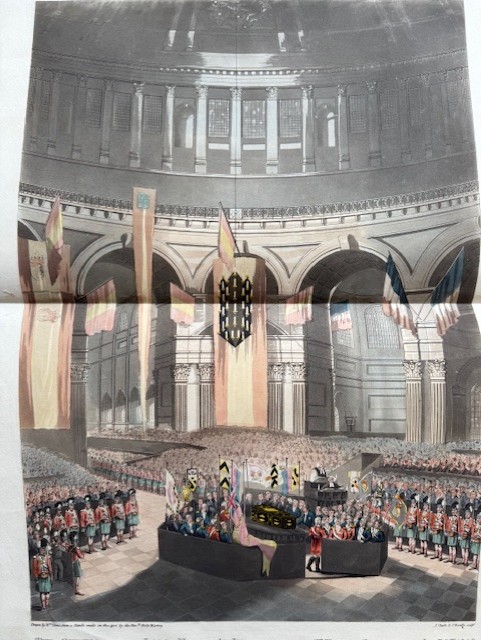
Funeral and Interment in St Paul's, in Blagdon, 'Graphic History'
Barry Windeatt, Keeper of Rare Books